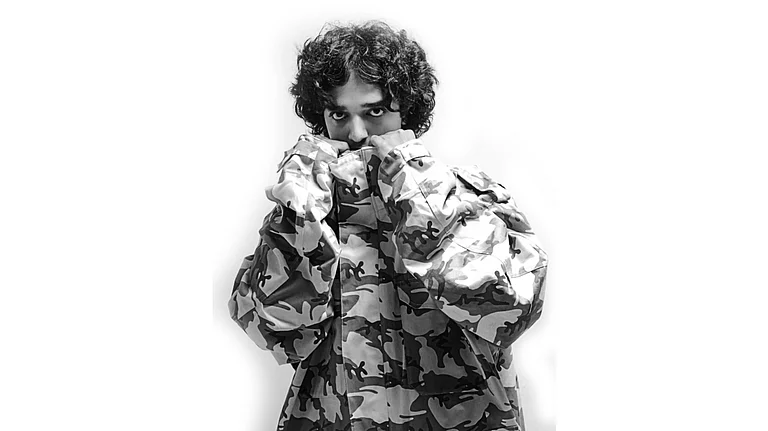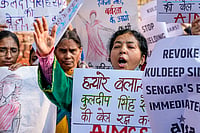Lata Mangeshkar christened Madan Mohan ‘Ghazal ka Shehzaada’ and once admitted that she would find his compositions difficult to master, and more complex than many other composers she had the fortune to collaborate with. Her statement rings true, when one notices the jump notes, the measured use of orchestration for pure melody, and the heavy influence of Indian classical music in Madan Mohan’s compositions. The lilting tunes are whole in themselves.
When thinking of composers in popular terms of the 1950s-1970s, one tends to name composers like S.D Burman, Shankar-Jaikishan, Laxmikant-Pyarelal, O.P Nayyar and many other stalwarts—Madan Mohan’s name does not come immediately at the top of this list. Yet, the moment one thinks of one’s favourite songs from the era, it is impossible that it will be devoid of a Madan Mohan composition. The pull and popularity of his music has stood the test of time—so much so that 61 years after its release, Woh Kaun Thi’s (1964), “Lag ja Gale”’ persists as one of the most romantic ballads of all time. It envelops the beauty of romance, female desire, and the sadness of impending separation—all in one eternal song that refuses to leave the minds and hearts of listeners.

There are many such iconic songs that have been composed by him. What is particularly interesting is that there isn’t a signature style or tune that he can be boxed into. For example, the trademark horse gallop with O.P Nayyar, or much later, the use of western sounds and instruments alongside experiments in orchestration with R.D Burman, would become identifiers of their craft. Madan Mohan’s tunes, on the other hand, are identified by their melody, harmony and timelessness. While his journey began in 1950s with composing for Aankhen (1950), it was in the latter part of the 50s and through the 60s that most of the work he is best known for today, released. Madan Mohan’s collaborations with all artists—whether Mangeshkar and Mohammad Rafi, both of whom he collaborated with frequently, or, Kishore Kumar and Manna Dey, with whom he has a very limited number of songs—includes at least two songs that have lived well beyond generations, decades and films they were created for.
The entire experience of listening to a Madan Mohan composition is that of a complete piece—where the voice of the artist is in sync with the mood of the song, the situation and feeling of the character, and the instruments at work. More often than not today, we listen to music and songs, where each part of the song has a life of its own. However, in Madan Mohan’s composition, we heard pieces that were complete and together in symphony, and whole in isolation.

One of my most favourite films with his music is Dastak (1970), for which he also won the National award that year. “Baiyan na dharo o balma” and “Mai ri main kaase kahoon” are both based on Indian classical rhythm. You recognise the sam as it comes. Mangeshkar’s finesse on technique has been explored, pushed and used to the maximum in both the compositions. It is also particular only to a few composers to use the strengths of the singers they choose in entirety. Mangeshkar’s strength of incredible technique and range, specifically in the high notes, is explored fully in Madan Mohan compositions—whether it is “Mera Saaya”, or “Naino mein badra chhaye” both from Mera Saaya (1966), or “Ruke Ruke se kadam” from Mausam (1976), or “Hai tere saath meri wafa” from Hindustan ki Kasam (1973). Each of these songs has remained in public memory for years and has always been counted in some of Mangeshkar’s best. Some songs have a little more bent towards classical; others give significance to beat harmony—but the focus on the voice of the singer and the impact of the lyric is unmissable.

In complete contrast to these are two distinct songs from two critical films across two completely different time frames—Dekh Kabira Roya (1957), where he collaborates with Manna Dey, and gives us “Kaun aaya mere mann ke dware”; and the other, the unforgettable, “Tum jo mil gaye ho” from Hanste Zakhm (1973), which is a completely different soundscape. Rafi’s voice echoes through a symphony of strings, creating a melody that is hummable, has a beautiful lounge quality to it, and then suddenly disrupts in rhythm. These beautiful experiments, change of beats, continuing of the song and still keeping the idiom of the song intact reflect the richness of his repertoire. From Dastak’s classical beauties, to Hanste Zakhm’s young abandon, Madan Mohan’s music spoke the language of the time it was composed for.

It is crucial to mention that each of these songs also continue to be celebrated today, because of how well they are written. The words of each of the lyricists—ranging from Gulzar to Kaifi Azmi, from Majrooh Sultanpuri to Raja Mehdi Ali Khan—are indispensable to the tunes they now live in by Madan Mohan. The two entwined, is what have given listeners catharsis—often hope, often relief, and often just a balm, standing in for emotional expression.
There was an inherent sensitivity to Madan Mohan’s music that lives on in his evergreen tunes. Even fifty years after his passing, the lasting impact of his work stands as a testament to the reasons we need artists like him. Because when there is nothing else, there is art. And when there is everything else, there is art.



























